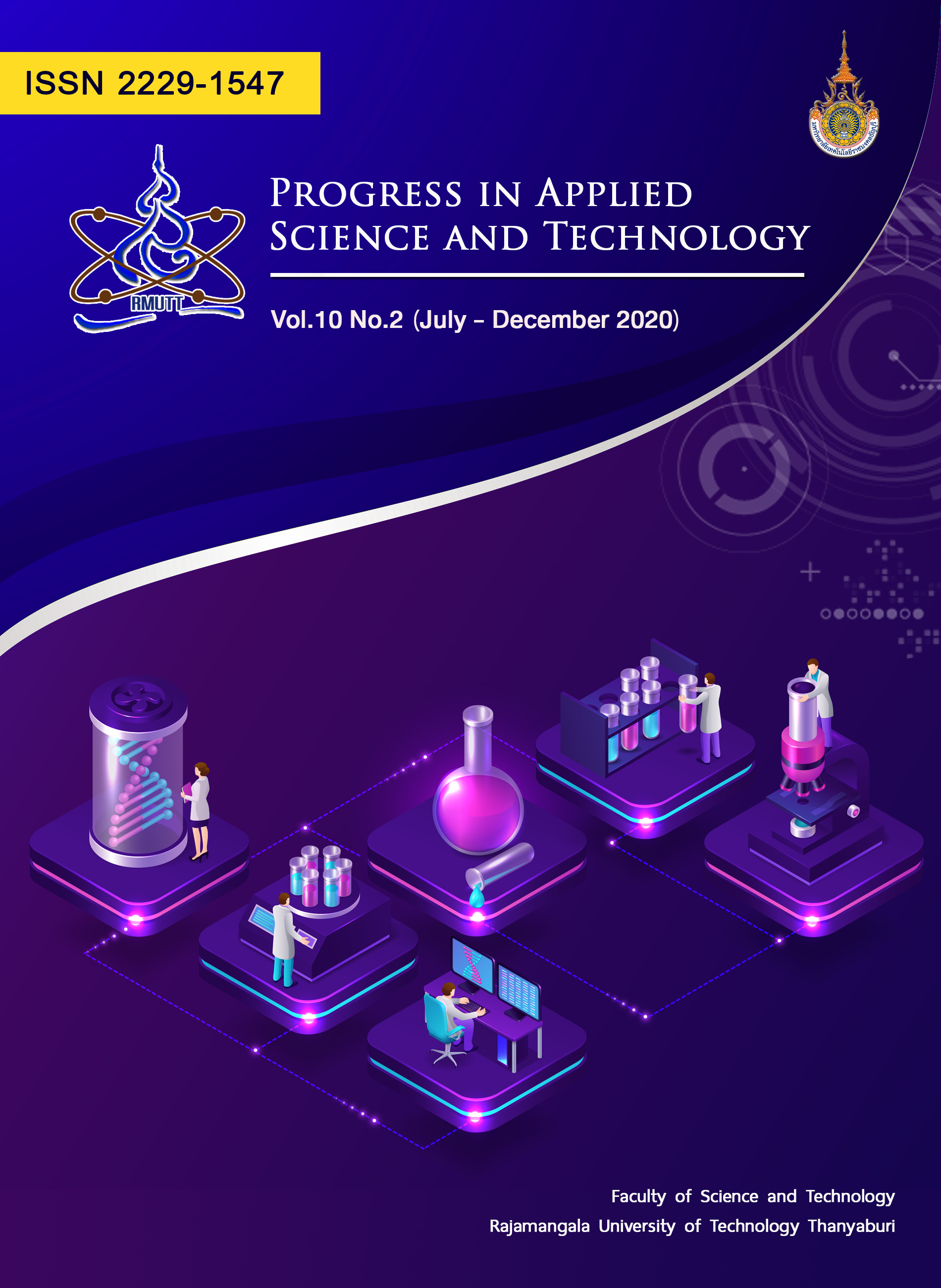Sensory Evaluation and Consumer Acceptability of Ready-to-Drink Flower Product
Main Article Content
Abstract
The study on sensory evaluation and consumer acceptability of two formulas of ready-to-drink flower products included damask rose beverage and water lily beverage were carried out. One hundred target consumers (20% male and 80% female) participated in this study. Acceptance testing for two formulas of flower beverage was evaluated by panel test. The sensory evaluation of two formula beverages showed that the participants preferred the water lily flower beverage (57%) more than the damask rose flower beverage (43%). The hedonic scores of freshness attribute of water lily flower beverage were significantly higher than damask rose flower beverage (P<0.05). The result of the JAR scale analysis suggested that the freshness attribute should be increased in both product formulas. The study on the effects of demographic characteristics on product acceptance impressed that the age and income factors affected the product acceptance. For damask rose beverage, age and income factors had the impact on color and sweetness attributes, respectively. While, only age factor affected the product acceptance of water lily flower beverage in terms of flower fragrance, sweetness, freshness, and overall liking attributes.
Article Details
References
Wongwattanasathien O, Kangsadalampai K, Tongyonk L. Antimutagenic activities of some flowers flowers grown in Thailand. Food Chem. Toxicol. 2010;48(4): 1045-51.
Skrajda-Brdak M. Phenolic compounds and antioxidant activity of edible flowers. J. Educ. Health Sport. 2017;7:946-56.
Liamkaew R, Chattrawanit J, Danvirutai P. Kombucha production by combinations of black tea and apple juice. Sci & Tech RMUTT J. 2016;6(2): 139-46.
Ivanka P, Nadezhda P, Ivan I. Five Edible Flowers–Valuable Source of Antioxidants in Human Nutrition. Int. J. Pharmacogn. Phytochem. Res. 2016;8(4):604-10.
Hemathulin S, Sopajon S, Seepanrom I. Healthy drink of fancy edible flowers squash product. Khon Kaen Agriculture Journal. 2015;43(1):305-10.
Mahabob M, Mohan J, Gunasekaran S. Uses of medicinal values of Rosa damacena mill in dentistry-A review. J. Pharm. Res. Int. 2018;4(2): 92-4.
Kameni PM, Dzeufiet DPD, Kamtchouing PA. Review of the pharmacological potential of the water lily Nymphaea lotus. Modern Applications of Bioequivalence & Bioavailability. 2017;1(5):1-3.
Meilgaard M, Civile GV, Carr BT, Sensory Evaluation Techniques. CRC Press Boca Raton, FL. 1987.
Stefano B, Elisa B, Rita M. Antioxidant power, anthocyanin content and organoleptic performance of edible flowers. Sci. Hortic. 2016;199: 170-7.






